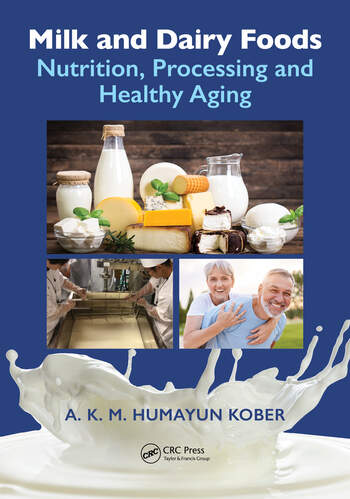Food Automation & Manufacturing Conference report
FA&M Conference Report
Innovating risk assessment and world-class best practices










Leading edge solutions for automation, food safety and sustainability were the underlying themes of the 2013 Food Automation & Manufacturing Conference and Expo (FA&M), sponsored by Food Engineering, held April 14-17 in Naples, FL. The event, which drew more than 200 industry professionals, featured presentations that updated participants on ways to optimize their processes through efficiencies in automation, maintenance and strategic manufacturing partnerships.
The audience—which for the first time included a virtual community able to not only view but also post questions on three presentations via live streaming—also heard about cost and compliance issues related to the Food Safety Modernization Act and overall equipment effectiveness.
Two conference presentations focused on key strategies and best practices that target equipment and personnel in a plant and demonstrated how a new focus on risk assessment and operating best practices can transform a food and beverage business.
Best practices to improve the bottom line
Today’s business climate and global competition demand that companies attain maximum performance and multi-capability from their assets. Consequently, asset performance initiatives are vital to creating a competitive advantage, says Rob Miller, vice president of engineering at ConAgra Foods.
<A company needs to better understand, configure and utilize its equipment and personnel assets to be more capable, reliable and flexible to help manufacturing add to the bottom line and improve business as a whole, Miller said in his FA&M keynote address.
“Communication between technical organizations within a company is fragmented. Engineering, R&D or maintenance operations are all focused on their own specific goals. This type of culture can limit company growth and success,” says Miller. “Ask yourself how many times a project was screwed up due to miscommunication between different groups.”
At the same time, many companies have an aging machinery asset base—producing products on lines designed two decades ago for a specific product. Miller says teams have repurposed the equipment and, in some cases, increased capacity as a result. “However, many of the new products don’t marry to that asset base well, so the asset base can have a negative impact. It can take a lot of money to modify or replace.”
ConAgra has identified three key strategies that will help overcome those challenges and bring additional profitability to the bottom line, areas it calls Asset Performance Vision, Seamless Technical Community and Standardize/Modular Design.
The goal of Asset Performance Vision is to declare the types of business profiles that exist in a manufacturing plant—manage for cash lines versus growth lines. This provides the starting point where a business can think about its investment and continuous improvement strategies, and how to efficiently and effectively convert its plants and equipment into sustainable sales and profits. “This allows you to look at your network of assets, see how it is designed, what your capabilities are and what you are doing. If you want to go into foodservice, but most of your equipment is in bulk packaging, you can figure out how to align machine strategies with the vision of where you want the business to go,” says Miller.
Another key component is looking at manufacturing practices to determine what “good” looks like. “When you see what sustainable, profitable manufacturing looks like, and all the components and configurations in place to achieve it, you can overlay that ideal with where your practices are today. You can put together a plan to build toward that plant of the future,” says Miller.
Miller suggests conducting a hypothetical “white sheet,” where you select all desired parameters of a line (your ideal mean time between failures and repairs, the number of operators per line or your aim of 85 OEE, for example), and then eliminate all the barriers (including capital investment) to engineering such a system in your calculation. “You will not be able to afford this system, but the exercise is not wasted work. You can extract information on the specific types of components needed to reach your goals. Although you may want 85 OEE, the white sheet may only reveal changes to your process that can get you to 75 OEE. You can use the white sheet as a building block toward process/production improvements.”
Creating a Seamless Technical Community (STC) between core competencies within the plant is the third component that can reap huge rewards. In a company culture where a Seamless Technical Community approach is applied, the groups involved in a project—R&D, engineering, maintenance and operations—don’t just pass an item from one to the other; they are truly engaged. “Operations and maintenance receive an item from engineering R&D; they are part of the design team. Suppliers need to be a part of [this process], as they are subject matter experts.”
ConAgra ran a complex pilot project where it applied STC, based on methodologies developed by Procter & Gamble around methods of process packaging and product development, vertical startup and product lifestyle. “The objectives of the project were clearly understood by all groups.
“What was impressive was that in conversations, one couldn’t tell the operations person from the maintenance person; they discussed the objectives of the project, not the objectives of operations or R&D. Maintenance could tell R&D and engineering about flaws they’d seen in the equipment or why they could not hit their mean time between failure number. R&D looked for feedback from the operators and maintenance as to what aspect of the product wasn’t working. This style of working together is powerful. It can reduce process or product reworking, eliminate miscommunication and significantly enhance the opportunity to hit higher OEEs,” says Miller.
Although ConAgra has systems for various types of processing—including canning, baking and flaking—equipment within those groups can be standardized and made modular, and the technology approaches designed to run them may be “ripped and reapplied” to other manufacturing areas.
Looking for a reprint of this article?
From high-res PDFs to custom plaques, order your copy today!













